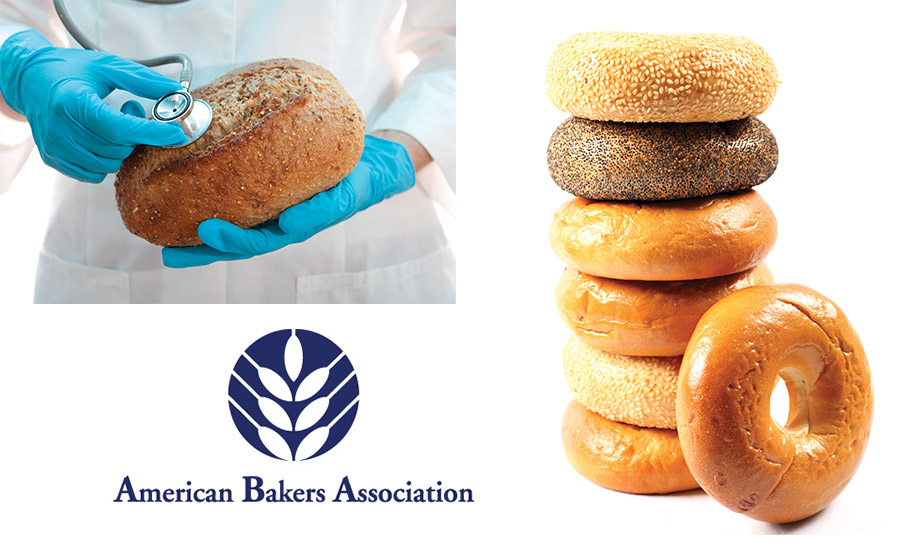Investing in the future of the bakery industry

Multiple prevailing trends at the consumer and regulatory levels will factor into the business concerns of the bakery industry over the coming year. These include product-development dynamics like non-GMO, nutritional labeling, transparency and food safety—all of which have the potential to positively influence overall shopper perceptions related to bread and the other baked goods that play a part of dietary patterns.
To provide a look at these concerns, we spoke with Fred Penny, president, Bimbo Bakeries USA and the new chairman of the American Bakers Association (ABA), and Robb MacKie, president and CEO, ABA.
Douglas J. Peckenpaugh: How do you see the state of the bakery industry today?
Fred Penny: It is an exciting time to be in the industry. The opportunities are plenty, but there are also challenges with regard to fad diet books, articles and bloggers talking about or encouraging reduced bread consumption and carb consumption. The bread category has been a big challenge for several years now—flat to slightly down.
There are a lot of opportunities for more growth in parts of the category, and it is pretty dynamic and fluid. Consumer health-and-wellness preferences and eating habits are changing. Consumers are looking for—and, in some cases, demanding—more transparency. There has been a lot of discussion around clean-label, which the industry is taking on. We have also seen a lot changes in technology, e-commerce, shopping and the impact of digital. There is an awful lot going on, but I’m optimistic about the overall state of the industry and that the industry will take the challenges on and continue to try to meet consumers’ needs.
DJP: How will your years of bakery experience aid you in your role as ABA chairman?
FP: I have spent 32 of my 36 working years in the baking industry, in finance, strategic planning, general management and even a stint in marketing, and I have seen a lot of changes in the industry. We have seen extensive consolidation, and I have been on both sides, from acquired to acquiring, and I have an appreciation for the amount of change required to be successful in the industry. I believe I understand what ABA members today are dealing with, and I am looking forward to working with the membership and the ABA staff to continue to solve the problems facing the industry.
I have a great appreciation for the work that ABA does and how valuable it is to its members. I have developed even more appreciation over the past year for ABA’s work because the magnitude of the issues has seemingly increased. This entire issue around GMO labeling is a really strong example of that.
DJP: GMO labeling is very much top-of-mind for everybody in bakery today. What are some of the other legislative and top issues and priorities for ABA in the coming year?
FP: GMO is clearly top-of-mind. There will also be a new Nutrition Facts panel format, and some changes in the requirements will have some impact on some bakery categories, including changes related to definition of serving sizes. It is no small undertaking for the industry to change every Nutrition Facts panel for every product.
Robb MacKie: I know the Nutrition Facts label is a high priority for FDA. It is not just the graphic itself, but the science underlying it. Fred talked about serving size, and a few other issues here are sugar, sodium and fats. A new issue that directly impacts this industry is fiber and making sure FDA defines fiber properly, so that it will allow for some of the high-fiber whole grains. Some of the research that the Grain Foods Foundations did, and some emerging science from Arizona State and Stanford, shows that diets that are higher in fiber actually lead to a reduction in some common illnesses, in addition to potentially some of the more-serious lifelong illnesses. There is a lot of emerging science in that space, so we just have to make sure FDA gets that right.
FP: Issues related to implementation of the Food Safety Modernization Act (FSMA) is also on the list of work for ABA.
RM: FDA is under the gun—and, in some cases, under court order—to get the FSMA regulations out, so we have a very aggressive timeline this year. There are also a host of workforce issues we have been very involved with in terms of addressing them from an industry-consensus perspective. Our friends at the Department of Labor and the National Labor Relations Board are very active. Also, the federal government has fully implemented the Affordable Care Act, and that presents issues.
FP: We are also going to continue to work on making sure that the industry is healthy for the future—that means bringing in and developing young talent across the industry, expanding our base.
DJP: How is ABA helping efforts to build more transparency into our foods?
FP: ABA is working with the Grocery Manufacturers Association (GMA), the Food Marketing Institute (FMI) and other industry groups in being responsive and finding a way to become more transparent and giving consumers the information about food they are requesting. I think this issue will only get more attention. Consumers have the right to know where their food comes from and that it is safe.
DJP: What will some of the focal points for ABA be later this year at the 2016 International Baking Industry Exposition (IBIE)?
FP: We seem to be off to another extremely strong start with IBIE. We are almost sold out in terms of exhibitors from the spectrum of equipment, services and ingredients. One of the focus areas is the educational program.
RM: More than 90 sections over the course of IBIE will focus on ingredients, processes, international opportunities, management, retail, sales and marketing.
FP: We have also brought in the Global Cold Chain Alliance (GCCA) as a strategic partner for IBIE, so there will be some educational offerings from that initiative.
RM: The cold chain is clearly a growing area for the industry. In ABA’s annual member-engagement survey, we ask about plans for capital expenditures in the coming year, and for the first time ever, we had 96 percent say they were going to maintain or increase their capital expenditures. That is about a 6 percent increase over last year, and we had over 30 percent of folks report a significant increase for capital expenditures. We also asked, for the first time, for members to quantify what percentage will go into the frozen or refrigerated bakery area—something that is going to take off in the U.S. Almost 63 percent of our folks thought it was likely or most definitely that there will be a significant increase in frozen and refrigerated bakery product equipment in the U.S. That is pretty overwhelming and an area where GCCA is staying ahead of the curve.
FP: It is difficult for me to see how a company would be able to, on their own, manage their way through some of these really tough issues if they are not part of ABA. We have strength in numbers, with strong leadership from ABA and the expertise needed. It is the right way for the industry to represent itself and to deal with the issues that arise.
We will continue to add members to ABA—and help develop future leaders with some of the executive leadership development programs that ABA offers. The bakery industry needs to be healthy and vibrant, and that means investing in the people who will run these businesses in the coming years.
Looking for a reprint of this article?
From high-res PDFs to custom plaques, order your copy today!








